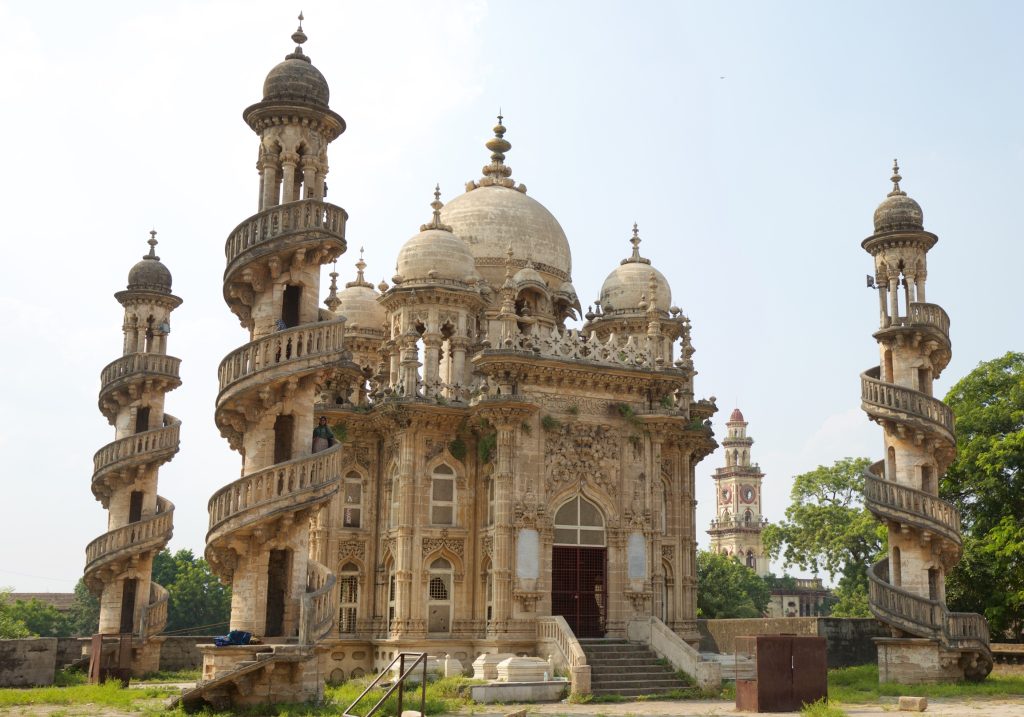
Gujarat is a state located on the western coast of India, with a rich and diverse history, culture, and economy. Its significance in Indian history is immense, given its role in trade, culture, and politics, dating back to ancient times.
Historical Facts of Gujarat
Ancient Gujarat (Indus Valley Civilization):
- Gujarat has been home to one of the world’s oldest civilizations, the Indus Valley Civilization, known for the cities of Dholavira, Lothal, Kalibangan, and Surkotada. These cities are considered one of the best examples of urban planning, with advanced drainage systems and remarkable craftmanship in beads, pottery, and metalworking.
- Lothal was a major port city and an important center for the trade of beads, semiprecious stones, and other goods.
Mauryan and Gupta Periods:
- In the 4th and 3rd centuries BCE, Gujarat was part of the Mauryan Empire, under the rule of Emperor Ashoka. After the fall of the Mauryan dynasty, Gujarat was governed by various regional dynasties.
- During the Gupta Empire (circa 4th-6th century CE), Gujarat was part of the region under their influence, especially during the reign of Chandragupta I and Samudragupta.
Medieval Period:
- The region witnessed the rise of various important dynasties, including the Rashtrakutas and the Chaulukyas (also known as Solankis), who ruled from the 10th to the 13th century. The Solankis were great patrons of art and architecture, building magnificent temples such as the Sun Temple at Modhera and the Rani Ki Vav in Patan, a stepwell that is a UNESCO World Heritage site.
- The Sultanate of Gujarat was established in the 15th century, with Sultan Ahmed Shah founding Ahmedabad (named after him) as the capital of the region.
Mughal and Maratha Period:
- Gujarat came under Mughal rule in the 16th century, and it was an important part of the empire during the reign of Akbar and his successors. The region became a center of commerce and art.
- In the 17th century, the Marathas began to establish their influence in the region, particularly after the decline of Mughal power.
British Colonial Period:
- Gujarat came under British control after the defeat of the Marathas in the 18th century. The British East India Company took over Gujarat, and it became a significant region for trade, especially with the development of ports like Surat, which had been a crucial trading hub in the medieval period.
- During the Indian Rebellion of 1857, Gujarat was relatively peaceful compared to other parts of India, though the British made efforts to maintain control over the region.
- Mahatma Gandhi, one of the most important leaders in India’s struggle for independence, was born in Porbandar, Gujarat, in 1869. He played a major role in leading India to independence through non-violent resistance.
Post-Independence Gujarat:
- After India’s independence in 1947, Gujarat became a part of the Bombay State, but it was later bifurcated in 1960 into two states: Gujarat and Maharashtra. Since its creation, Gujarat has emerged as one of India’s most economically advanced states, with a thriving industrial base and export-driven economy.
- In modern times, Gujarat has become known for its business and industrial development, and it is home to some of the world’s largest corporations, especially in the sectors of petrochemicals, textiles, and diamond cutting.
Geography and Economy
- Location: Gujarat is bordered by the Arabian Sea to the west, Maharashtra to the south, Madhya Pradesh to the east, and Rajasthan to the north. It has a diverse landscape ranging from coastal plains to the arid Kutch region, the fertile Saurashtra region, and the hilly areas in the north-east.
- Capital: Gandhinagar (administrative capital) and Ahmedabad (commercial capital).
- Economy: Gujarat is one of the most economically advanced states in India. It has a highly diversified economy with significant contributions from agriculture (including cotton, groundnut, and spice farming), petrochemicals, manufacturing, diamond polishing, and information technology.
Culture
- Gujarat has a rich cultural heritage, with notable contributions to classical dance forms (like Garba and Dandiya Raas), folk music, handicrafts (including Bandhani textiles, Kutch embroidery, and Patola sarees), and cuisine.
- The Gujarati cuisine is known for its variety, with popular dishes like Dhokla, Khandvi, Undhiyu, and Farsan (snacks).
- The state is also home to numerous religious sites, with temples dedicated to Shiva, Vishnu, and Jainism, as well as Sikh Gurudwaras. Gujarat is the birthplace of Swaminarayan, the founder of the Swaminarayan sect, and Mahatma Gandhi, the leader of India’s nonviolent independence movement.
Tourist Attractions
- Rann of Kutch – Famous for its salt marshes and the Rann Utsav festival.
- Gir National Park – Home to the Asiatic lion.
- Somnath Temple – One of the 12 Jyotirlinga shrines of Lord Shiva.
- Dwarka – A city with significant historical and religious importance, believed to be the kingdom of Lord Krishna.
- Statue of Unity – The world’s tallest statue, honoring Sardar Vallabhbhai Patel, located in the Narmada district.
Language and Religion
- Language: Gujarati is the official language of the state, but Hindi and English are also widely spoken.
- Religion: Gujarat is predominantly Hindu, with a significant population of Muslims, Jains, and smaller communities of Christians and Sikhs.
Gujarat’s history is a story of thriving commerce, cultural richness, and political significance, making it one of India’s most vital regions. Its continued importance is reflected in its economic success, its position as a hub for commerce and industry, and its cultural and historical contributions to the Indian subcontinent.
INDIAINNINGS
Campaigns
- Diwali Special
- Independence Day Celebrations
- Holiday on Holi day
- New Year Specials
Help
- Order Tracking
- Terms & Conditions
- Privacy Policy
- Tutorials
- FAQ
Help
- Facebook Chat
- Whatsapp Help
- E-mail Support
- Contact



